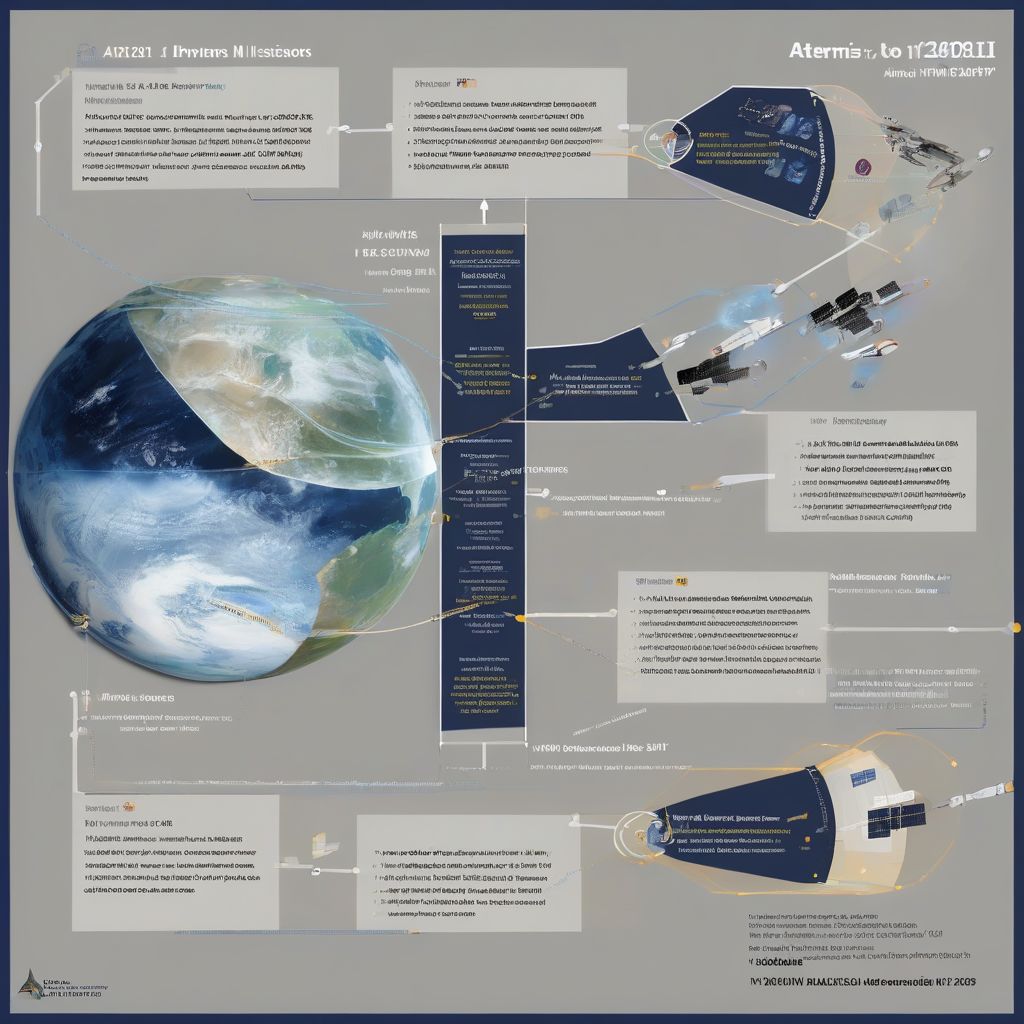Ever dreamt of walking on the moon? For decades, it felt like a distant dream, a memory of a bygone era. But the dream is alive and kicking, and it’s called Artemis. NASA’s Artemis program isn’t just about returning to the moon; it’s about establishing a sustainable presence there, a stepping stone for future missions to Mars and beyond. So, what’s the timeline for this ambitious endeavor, and what are its ultimate goals? Let’s dive in.
Artemis: A Multi-Phased Approach
The Artemis program is structured in phases, each building upon the last, culminating in a permanent human presence on the moon.
Artemis I: The First Step
Artemis I, successfully completed in late 2022, was an uncrewed test flight. The mission focused on testing the Orion spacecraft, the Space Launch System (SLS) rocket, and the ground systems at Kennedy Space Center. This crucial first step paved the way for future crewed missions.
Artemis II: Humans Return to Lunar Orbit
Scheduled for late 2024, Artemis II will be the first crewed mission of the program. Four astronauts will embark on a journey around the moon, testing Orion’s life support systems and performing deep space maneuvers. This mission, while not landing on the lunar surface, marks a significant return of humans to the vicinity of our celestial neighbor.
Artemis III: Boots Back on the Moon
The highly anticipated Artemis III mission, planned for 2025, aims to land the first woman and the first person of color on the moon. This historic event will utilize the Starship Human Landing System (HLS) developed by SpaceX, marking a new era of lunar exploration. The crew will spend about a week exploring the lunar south pole, a region of significant scientific interest due to the potential presence of water ice.
Artemis IV and Beyond: Building a Lunar Outpost
Following Artemis III, subsequent missions will focus on establishing a sustainable presence on the moon. Artemis IV, targeted for 2027, will deliver the first module of the Lunar Gateway, a space station orbiting the moon that will serve as a hub for future missions. Future Artemis missions will continue to deliver components for the Gateway and conduct scientific research on the lunar surface.
The Goals of the Artemis Program: More Than Just Footprints
The Artemis program extends far beyond simply planting a flag on the moon. It encompasses a broader vision for space exploration with several key objectives.
Scientific Discovery: Unlocking Lunar Secrets
The moon holds a wealth of scientific secrets, from understanding its geological history to investigating the potential for utilizing lunar resources. Artemis missions will collect samples, conduct experiments, and explore the lunar south pole, a region believed to hold valuable water ice deposits. This scientific research will deepen our understanding of the moon’s formation and its potential to support future space exploration.
Technological Advancement: Pushing the Boundaries of Innovation
The Artemis program is driving innovation in spacecraft design, propulsion systems, and robotics. The development of the SLS rocket, the Orion spacecraft, and the Starship HLS are pushing the boundaries of what’s possible in space technology. These advancements will benefit not only lunar exploration but also future missions to Mars and beyond.
Economic Development: A New Space Economy
The Artemis program is fostering a new space economy, creating opportunities for commercial partnerships and private sector involvement. Companies like SpaceX are playing a key role in developing lunar landing systems and other technologies. This public-private collaboration will drive economic growth and stimulate innovation in the space sector.
International Collaboration: A Global Endeavor
Artemis is a truly international endeavor, with partnerships involving space agencies from around the world. This collaboration allows for the sharing of expertise, resources, and scientific data, fostering a global community focused on exploring the cosmos. This international cooperation represents a unified effort in pushing the boundaries of human exploration.
Inspiration for Future Generations: Reaching for the Stars
Perhaps one of the most important goals of the Artemis program is to inspire the next generation of scientists, engineers, and explorers. Seeing humans return to the moon, especially the first woman and person of color stepping onto its surface, will ignite the imaginations of young people around the world, encouraging them to pursue careers in STEM fields and dream of their own journeys to the stars.
 NASA Artemis Program Timeline
NASA Artemis Program Timeline
Conclusion: A New Era of Space Exploration
The Artemis program represents a new era of space exploration, one that is focused on sustainable presence, scientific discovery, and international collaboration. From the initial uncrewed test flight of Artemis I to the establishment of a lunar outpost, the program is steadily progressing towards its ambitious goals. The return of humans to the moon is not just a symbolic achievement; it is a testament to human ingenuity and a stepping stone to a future where humanity ventures deeper into the cosmos. What are your thoughts on the Artemis program? Share your comments below and let’s discuss the future of space exploration!



